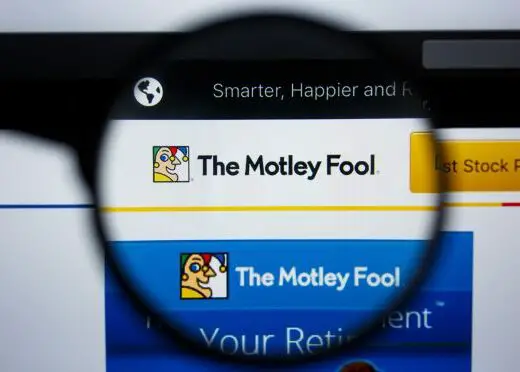
CommonCentsMom.com is advertiser-supported: we may earn compensation from the products and offers mentioned in this article. However, any expressed opinions are our own and aren't influenced by compensation. The contents of the CommonCentsMom.com website, such as text, graphics, images, and other material contained on this site (“Content”) are for informational purposes only. The Content is not intended to be a substitute for professional financial or legal advice. Always seek the advice of your Financial Advisor, CPA and Lawyer with any questions you may have regarding your situation. Never disregard professional advice or delay in seeking it because of something you have read on this website!
Mint is a free personal finance management tool for checking your account balances, making transfers, and tracking spending. Personal Capital is a paid tool that offers a similar service. This article will compare the two tools so you can use either one as you see fit. It’s worth knowing what they have to offer.
What is Personal Capital?
Personal Capital has both budgeting and investment capabilities, but it is primarily an investment platform. Personal Capital has a team of investment professionals that can manage all of your investments for you. They act like Mint’s financial aggregator, enabling you to link all of your financial accounts together so that you have one comprehensive view of your financial affairs. Personal Capital offers both a free and a premium version. The premium version offers more features, including automatic investment updates.
What is Mint?
Mint is a free online application that allows you to easily manage all your personal finances. It brings all the financial information that you need to manage your finances into one easy-to-use application. This includes everything you use for your checking account, savings account, credit cards, investments account, and even your PayPal account. Mint allows you to look at your finances holistically, rather than in separate applications. Mint is one of the most popular personal budgeting applications, and it is part of the same TurboTax and Quicken software families. Mint allows you to manage virtually all of your finances, for free.
Features by Category
Budget Developing: Developing a budget is one of the best ways to control your spending and improve your financial well-being. Both platforms have budgeting features that help you track your spending and track your debt. Personal Capital has a built-in budget feature that automatically tracks what you spend. You can then set goals for each month that you plan to meet and compare it to what you plan to spend.
With Mint, you can plan your budget as you would any other app, and you can include categories to see where your money is going. Mint automatically places your purchases in the categories listed so you know where your money is going and how your budget is doing. You can also automate monitoring your spending by using the MintSights feature, which shows you how much your subscriptions have increased over the past month and what prices you have paid for those services.

Financial Advice: Personal Capital and Mint can help you manage all of your debts. You may owe large amounts of money on your mortgage or even a small obligations like your phone bill. Using net worth calculator that Personal Capital offer, you can monitor all the debts you have related to linked accounts. Personal Capital keeps track of your assets versus liabilities so that you can get an accurate view of your finances.
Mint allows you to keep track of your loans and ownership of your assets. When you are planning your financial and budgeting plans, having information about your home loan in front of you will help you plan more accurately. So you can quickly track how much money you have and what bills you owe by adding the numbers to your bills in Mint. Then you can see not only what you have but also how much you owe. It helps you to pay your bills on time and avoid overdraft fees.
Retirement Planning: Having a long-term financial plan is the best way to stay on top of your spending plan. Both Personal Capital and Mint offer different financial planning tools, but they are geared toward similar things. Personal Capital lets you plan ahead for your future with their retirement planning. Personal Capital also offers a wealth of retirement planning services, like the ability to conjure scenarios and add expenses to your plan to see how those changes will affect your finances.
They provide free advice about your 401(k) plans. You can add your 401(k) or IRA funds to your Mint account to view them and analyze the fees they charge. Mint does not offer any additional tools for planning your retirement. Instead, it connects users to several investment options offered by other companies.
Investment Tracking: Both Personal Capital and Mint have tools that can help you manage your investments. Personal Capital wants to enable you to view all of your investments in one place. Its easy-to-use portfolio management tools combined with tools that allow you to look for hidden fees in your investment accounts gives you a thorough view of your savings and investments opportunities.
Personal Capital also offers a free investment review called an Investment Checkup. You can sign up for a free investment assessment to see if you’re investing in the right things. It gives you a look at how your investments are performing and how you should allocate your money to achieve your financial goals.
Mint allows you to view all of your investments in-app, and it helps you avoid paying unnecessary fees. Mint enables you to connect with brokerage or small investing accounts that other institutions offer. Mint also offers you the opportunity to work with a financial advisor to help you plan your finances and get the most out of your investments. The first 15 minutes of the financial coaching session are free; you can sign up for paid sessions after that.
How are they different?
Mint and Personal Capital both allow you to track your investments, but Personal Capital is better. It allows you to track how your money is invested. It tracks how much money you have in different accounts, down to the stocks in a mutual fund you own.
Using its smart technology, it calculates how much you pay in investment fees and how much that will cost you in the future. It can help you manage your wealth by providing an easy-to-use tool to track your money. It can help you analyze your investments and make investment recommendations based on your risk tolerance.
Mint is the best app when it comes to creating a budget and tracking your spending. Personal Capital will help you keep track of your expenses and help you organize them using useful graphs. But Mint let you plan your budget by category.
Mint offers a better goal setting option than Personal Capital. It allows you to set specific savings goals and monitor your progress toward those goals. Mint offers tools to help you figure out how much money you should put towards paying off debt or savings goals. It also tracks your progress toward those goals.
Personal Capital is a better option if you are planning to retire early. It has a robust retirement planning feature. You can calculate your retirement income through Monte Carlo simulation, and you can plan to have sufficient money to support your lifestyle. You can create many different retirement scenarios and compare them to each other.
Additionally, you can track your credit score using Mint, but not Personal Capital.
Mint is a great free tool for tracking your expenses and setting financial goals. Personal Capital is better for tracking your investments and helping you set up a plan to retire early. You can check out both apps to see which one you like best. The decision between the two will depend on what you need most.







